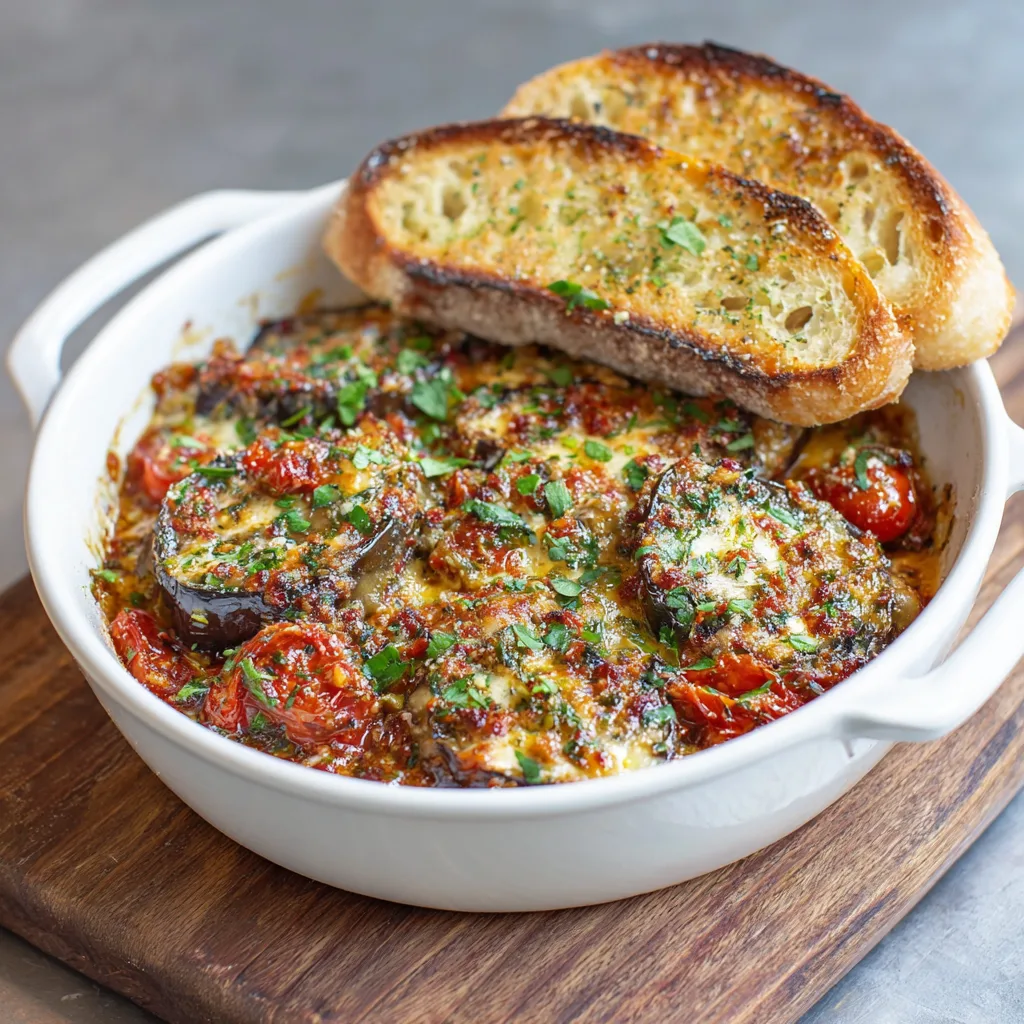Quick Mediterranean Eggplant Casserole
Eggplant casserole is a delightful and comforting dish, and the Mediterranean twist elevates it to a new level of flavor. This quick recipe brings together the best of Mediterranean cuisine – vibrant vegetables, aromatic herbs, and creamy cheeses – for a satisfying meal that’s perfect for a weeknight dinner or a weekend gathering. This article will guide you through creating a delicious and healthy Mediterranean eggplant casserole that’s easy to make and sure to impress.
Understanding the Mediterranean Diet and its Benefits
The Mediterranean diet is renowned for its health benefits and delicious flavors. It emphasizes whole, unprocessed foods like fruits, vegetables, whole grains, legumes, nuts, and healthy fats, particularly olive oil. Animal protein is consumed in moderation, and processed foods, sugary drinks, and refined grains are minimized. Incorporating the principles of the Mediterranean diet into your cooking, as we do with this eggplant casserole, can contribute to improved heart health, reduced risk of chronic diseases, and overall well-being.
The key ingredients in a Mediterranean diet work synergistically. The abundance of antioxidants and phytonutrients in vegetables protect against cell damage. Olive oil, rich in monounsaturated fats, supports heart health. Legumes and whole grains provide fiber, aiding digestion and promoting satiety. And the moderate intake of lean protein supports muscle health and provides essential nutrients.
The Health Advantages of Eggplant
Eggplant, the star of our casserole, is a nutritional powerhouse. It’s low in calories and high in fiber, which promotes digestive health and helps regulate blood sugar levels. Eggplant also contains antioxidants, such as nasunin, which has been shown to protect brain cells from damage. It’s a good source of vitamins and minerals, including potassium, manganese, and vitamin B6.
Beyond its nutritional value, eggplant’s texture and ability to absorb flavors make it a versatile ingredient. When cooked, it becomes tender and creamy, providing a satisfying base for the other Mediterranean flavors in our casserole.
A Step-by-Step Guide to the Quick Recipe
This recipe prioritizes speed and ease, making it perfect for busy weeknights. We’ll use a combination of fresh and canned ingredients to streamline the process without compromising on flavor.
Ingredients:
- 1 large eggplant, peeled and cubed
- 1 tablespoon olive oil
- 1 medium onion, chopped
- 2 cloves garlic, minced
- 1 (28 ounce) can crushed tomatoes
- 1 (15 ounce) can chickpeas, drained and rinsed
- 1/2 cup Kalamata olives, pitted and sliced
- 1/4 cup chopped fresh parsley
- 1 teaspoon dried oregano
- 1/2 teaspoon salt
- 1/4 teaspoon black pepper
- 1 cup crumbled feta cheese
- 1/2 cup shredded mozzarella cheese
Instructions:
1. Prepare the Eggplant: Preheat oven to 375°F (190°C). In a large bowl, toss the cubed eggplant with 1 tablespoon of olive oil, salt, and pepper. Spread the eggplant in a single layer on a baking sheet.
2. Roast the Eggplant: Roast the eggplant for 20-25 minutes, or until it is tender and slightly browned.
3. Sauté Aromatics: While the eggplant is roasting, heat the remaining olive oil in a large skillet over medium heat. Add the chopped onion and cook until softened, about 5 minutes. Add the minced garlic and cook for another minute until fragrant.
4. Simmer the Sauce: Pour the crushed tomatoes into the skillet with the onion and garlic. Stir in the drained chickpeas, sliced Kalamata olives, chopped parsley, dried oregano, salt, and pepper. Bring the sauce to a simmer and cook for 10 minutes, stirring occasionally, to allow the flavors to meld.
5. Assemble the Casserole: In a baking dish, layer half of the roasted eggplant, followed by half of the tomato sauce mixture. Repeat with the remaining eggplant and sauce.
6. Add the Cheese: Sprinkle the crumbled feta cheese and shredded mozzarella cheese evenly over the top of the casserole.
7. Bake the Casserole: Bake in the preheated oven for 20-25 minutes, or until the cheese is melted and bubbly, and the casserole is heated through.
8. Serve: Let the casserole cool for a few minutes before serving. Garnish with extra fresh parsley, if desired.
Tips and Tricks for the Best Results
- Salting Eggplant (Optional): Some people prefer to salt eggplant before cooking to draw out excess moisture and reduce bitterness. If you choose to do this, sprinkle the cubed eggplant with salt and let it sit for 30 minutes. Rinse and pat dry before roasting. This step can be skipped if you’re using fresh, young eggplants.
- Pre-Roasting vs. Sautéing Eggplant: Roasting the eggplant brings out its natural sweetness and prevents it from becoming mushy. However, if you’re short on time, you can sauté the eggplant in the skillet with the onion and garlic until it’s tender.
- Varying the Vegetables: Feel free to add other vegetables to the casserole, such as zucchini, bell peppers, or mushrooms. Sauté them with the onion and garlic before adding the tomato sauce.
- Adding Protein: For a heartier casserole, add cooked ground turkey or lamb to the sauce. You can also use white beans or lentils for a vegetarian protein boost.
- Using Different Cheeses: Experiment with different cheeses, such as ricotta, Parmesan, or goat cheese.
- Spice it Up: Add a pinch of red pepper flakes to the sauce for a touch of heat.
Customizing Your Mediterranean Eggplant Casserole
One of the great things about this recipe is its versatility. You can easily adapt it to suit your dietary preferences and available ingredients.
Vegetarian and Vegan Adaptations
This recipe is naturally vegetarian. To make it vegan, simply omit the feta and mozzarella cheese, or use a vegan cheese alternative. Nutritional yeast can also provide a cheesy flavor. To add richness and depth, consider including pureed white beans into the sauce.
Gluten-Free Options
This recipe is naturally gluten-free. Ensure that any canned or pre-packaged ingredients you use are also certified gluten-free.
Flavor Variations
- Greek-Inspired: Add a squeeze of lemon juice to the sauce and garnish with fresh dill.
- Italian-Inspired: Use Italian seasoning instead of oregano and add a pinch of sugar to the sauce to balance the acidity of the tomatoes.
- Spicy: Add a pinch of red pepper flakes or a chopped fresh chili pepper to the sauce.
- Smoked: Add a pinch of smoked paprika to the sauce for a smoky flavor.
Serving Suggestions
This eggplant casserole can be served as a main course or a side dish. It pairs well with a side salad, crusty bread, or a simple grain like quinoa or couscous. It’s also delicious served with grilled chicken or fish.
FAQs About Mediterranean Eggplant Casserole
Can I make this casserole ahead of time?
Yes, you can assemble the casserole ahead of time and store it in the refrigerator for up to 24 hours. Add the cheese just before baking. You may need to add a few minutes to the baking time if baking from cold.
Can I freeze this casserole?
Yes, you can freeze the casserole before or after baking. Wrap it tightly in plastic wrap and then in foil. Thaw it overnight in the refrigerator before baking or reheating.
How long does eggplant casserole last in the refrigerator?
Leftover eggplant casserole can be stored in the refrigerator for up to 3-4 days.
What’s the best way to reheat eggplant casserole?
You can reheat the casserole in the oven at 350°F (175°C) until heated through, or in the microwave.
Can I use dried herbs instead of fresh?
Yes, you can use dried herbs. Use about 1 teaspoon of dried herbs for every tablespoon of fresh herbs.
What is the best kind of eggplant to use?
Globe eggplant is the most common type and works well in this recipe. Italian eggplant is similar but slightly smaller. Japanese eggplant is long and slender with a delicate flavor, and also works well.
Can I grill the eggplant instead of roasting it?
Yes, grilling eggplant adds a smoky flavor. Slice the eggplant into 1/2-inch thick slices and grill until tender and slightly charred. Then, chop it into cubes before adding it to the casserole.
Is eggplant casserole healthy?
Yes, eggplant casserole is a healthy dish, especially when made with wholesome ingredients and a focus on moderation. It’s packed with vitamins, minerals, and fiber. This particular Mediterranean version emphasizes beneficial fats and minimizes processed components.




